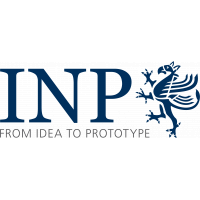The electron swarm parameters (bulk drift velocity, bulk longitudinal component of the diffusion tensor, and effective ionization frequency) in C2H4 (ethylene) are investigated for a wide range of the reduced electric field by means of measurements and kinetic calculations. The dataset contains results of measurements in a scanning drift tube apparatus under time-of-flight conditions as well as of kinetic swarm calculations, using solutions of the electron Boltzmann equation and Monte Carlo simulations. In addition to the bulk drift velocity, bulk longitudinal component of the diffusion tensor, and effective ionization frequency, results of the flux drift velocity, bulk transversal component of the diffusion tensor, and effective steady-state Townsend ionization coefficient are given.
| Field | Value |
|---|---|
| Group | |
| Authors | |
| Release Date | 2020-01-30 |
| Identifier | 8c6093fc-0672-4f1e-8dad-eb414320bead |
| Permanent Identifier (DOI) | |
| Permanent Identifier (URI) | |
| Is supplementing | |
| Plasma Source Name | |
| Plasma Source Specification | |
| Plasma Source Properties | Time-of-flight (TOF) experiment; ultraviolet laser light pulse (1.7 µJ, 5 ns) triggered electron generation on Mg disk used as photoemitter; Mg disk placed at the centre of a stainless steel electrode with 105 mm diameter serving as cathode; detector consisting of a grounded nickel mesh and stainless steel electrode 1 mm behind it; drift length between 7.8 to 58.3 mm; reduced electric field range (E/N) between 1 and 1790 Td, where 1 Td = 10^{-21} V m^{2} |
| Plasma Source Procedure | The drift cell is situated within a vacuum chamber made of stainless steel. The chamber can be evacuated by a turbomolecular pump backed with a rotary pump to a level of about 1 x 10^{-7} mbar. The pressure of the working gases inside the chamber is measured by a Pfeiffer CMR 362 capacitive gauge and ranged between 5 and 1000 Pa in the measurements. Electrons emitted from the Mg disk fly towards the collector under the influence of an accelerating voltage that is applied to the cathode. This voltage is established by a BK Precision 9185B power supply. Its value is adjusted according to the required reduced electric field (E/N) for the given experiment and the actual value of the gap during the scanning process, where E/N is ensured to be fixed. The collector current is amplified by a high speed current amplifier (type Femto HCA-400M) connected to the collector, with a virtually grounded input, and is recorded by a digital oscilloscope (type Picoscope 6403B) with sub-ns time resolution. Data collection is triggered by a photodiode that senses the laser light pulses. The low light pulse energy necessitates averaging over typically 20000 to 150000 pulses. The experiment is fully controlled by a computer using LabView software. |
| Plasma Medium Properties | Gas temperature: 293.15 K |
| Plasma Diagnostics Name | |
| Plasma Diagnostics Properties | The experiments are based on a scanning drift tube apparatus. Electron swarm parameters are derived from the measured swarm maps via a fitting procedure. Details are presented in I. Korolov et al., https://doi.org/10.1063/1.4952747. A kinetic simulation of the experimental drift cell is performed which allows to estimate the uncertainties introduced in the data acquisition procedure and provides a correction factor to each of the measured swarm parameters. The experimental studies of the electron transport are supplemented by numerical modelling solving the electron Boltzmann equation using different approaches as well as Monte Carlo simulations. Details of the different kinetic calculations are given e.g. in M. Vass et al., https://doi.org/10.1088/1361-6595/aa6789. |
| Language | English |
| License | |
| Public Access Level | Public |
| Contact Name | Detlef Loffhagen |
| Contact Email |
Data and Resources
- Electron swarm parameters in C2H4 - measured bulk drift velocitycsv
Measured bulk drift velocity W of electrons in ethylene (C2H4) at 293.15 K....
Preview Download - Electron swarm parameters in C2H4 - measured longitudinal diffusion coefficientcsv
Measured longitudinal component of the diffusion tensor times gas number...
Preview Download - Electron swarm parameters in C2H4 - measured ionization frequencycsv
Measured reduced effective ionization frequency nu_eff/N of electrons in...
Preview Download - Electron swarm parameters in C2H4 - measured SST ionization coefficientcsv
Reduced effective steady-state Townsend ionization coefficient alpha_eff/N...
Preview Download - Electron swarm parameters in C2H4 - Monte Carlo simulation resultscsv
Tabulated data of electron properties in ethylene (C2H4) at 293.15 K...
Preview Download - Electron swarm parameters in C2H4 - electron Boltzmann calculation results using BE DG methodcsv
Tabulated data of electron properties in ethylene (C2H4) at 293.15 K...
Preview Download - Electron swarm parameters in C2H4 - electron Boltzmann calculation results using BE 0D methodcsv
Tabulated data of electron properties in ethylene (C2H4) at 293.15 K...
Preview Download - Electron swarm parameters in C2H4 - electron Boltzmann calculation results using BE SST methodcsv
Tabulated data of electron swarm parameters in ethylene (C2H4) at 293.15 K...
Preview Download

![[Open Data]](https://assets.okfn.org/images/ok_buttons/od_80x15_blue.png)